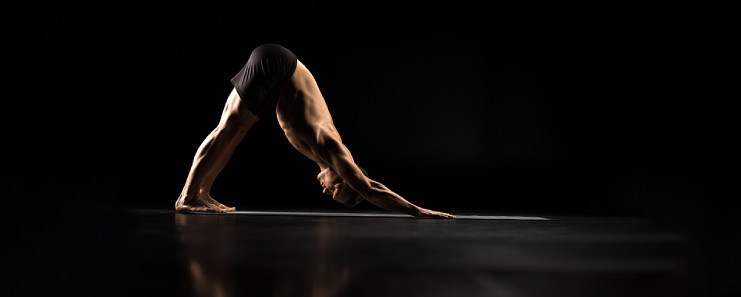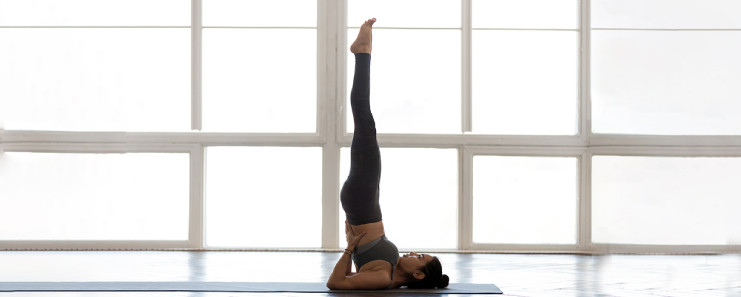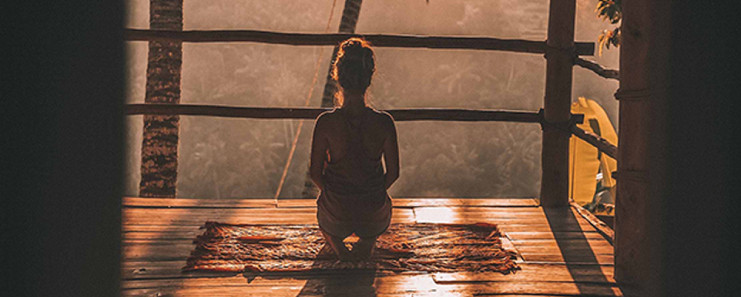How to Reduce Hair Fall is a Challenge for Many
Two decades ago, hair fall used to be associated with a midlife crisis. Gender irrespective, hair fall has been known as a sign to prepare for retirement. And it was true in the past generations because guess what, hair fall was not an issue until the age of 40 years, unlike today!
However, with the continuous increase in daily stress levels, degrading food quality, harmful lifestyle habits like smoking, coupled with genetic disorders, the age at which people have started experiencing hair fall has fallen drastically.
However, there are some ways you can try which can significantly reduce, and could even stop, hair fall. Two of them are yoga asanas and pranayama. Many practitioners have experienced that regular and diligent practice of these two have promoted hair growth.
All forward-bending asanas enhance blood flow to the head region and also increase general circulation. This helps in maintaining a good scalp hygiene and healthy hair. The following asanas can help you with that. Regular practice of these is recommended for best results.
Yoga Asanas to Reduce Hair Fall Naturally
- Adho Mukho Savasana (Downward Dog Pose)
- Utthanasana (Standing Forward Pose)
- Pavanmukthasana (Wind-relieving Pose)
- Sarvangasana (Shoulder Stand)
- Vajrasana (Diamond Pose)
- Kapalbhati Pranayama (breath of fire)
- Bhastrika Pranayama (Bellows breath)
- Nadi Shodhan Pranayama (Alternate Nostril Breathing)

1. Adho Mukho Savasana (Downward Dog Pose)
Start with all four limbs in a straight dog position. The elbows and knees should be straight. Now, push the hips out and pull the stomach inwards so that the body makes an inverted ‘V’ shape. The legs should be hip wide apart and hands should have a shoulder’s distance in between them. Elongate the neck and press the palms to the ground. Hold this position for a few breaths.
This asana enhances your blood circulation to the head. It is also effective against the common cold as it improves sinus activity. It can also be helpful for insomnia, depression and mental fatigue.
2. Utthanasana (Standing Forward Pose)
Stand with hands above head or in Tadasana (Mountain Pose). The spine should be straight with the feet a few inches apart. Inhale and lengthen the spine. Exhale, hinge the hips and bend forward upper body to move the hands towards the floor. Knees can be slightly bent to avoid any strain on the legs and lower back. Bring the fingertips down to touch the floor, if possible. The effort should be to put the body weight on the balls of the feet. Remain in this position for a few breaths and then relax.
This asana is useful in reducing tiredness and fatigue.
3. Pavanmukthasana (Wind-relieving Pose)
Lie down straight on the back. Take a breath in and pull right knee towards chest and clasp it in your hands. With exhalation, take the forehead towards the right knee. Remain in this position for a few seconds, breathing in and out gently. Take a breath in and put the head back. While exhaling, put right leg back on the floor. Repeat this process with the left leg and then with both legs.
This asana helps in eliminating toxic gases trapped in the intestines and aids digestion.
4. Sarvangasana (Shoulder Stand)

Don’t let the body fall as it may cause a jerk and/ or back pain. People who have difficulty with this can do the Setubandhasana (Bridge Pose).
Massage your scalp a little after coming out of the asana so that the hair follicles are stimulated and benefit from the increase in blood flow. This asana ensures the healthy function of the nervous system, genitals, respiratory system, and refreshes the thyroid gland. Moreover, it also enhances the blood flow to the brain.

5. Vajrasana (Diamond Pose)
Unlike other postures, this asana can be done immediately after eating food. Simply bend knees and sit on buttocks. Sides of soles should be kept as close as possible. The spine and back should be straight. Take heavy breaths in a steady rhythm. Hold this posture for 2-8 minutes.
This asana helps in reducing stomach gas, improves digestion, and helps in weight loss and urinary disorders.
Pranayama beneficial for Healthy Hair
Most people suffering from hair fall have complained that stress is a big factor causing the thick mane of hair to thin horribly. Along with yoga, pranayama has been shown to be the best antidote to stress. Moreover, it is not only an effective way to enhance hair growth, but it also helps improve your overall well-being.
6. Kapalbhati (breath of fire)
Sit in sukhasana (cross-legged pose) or vajrasana. Keep your right palm on navel and relax. Then, thrust your stomach inward and exhale a gust of air from the nose. Let the relaxation of stomach muscles bring the air back into the body and then repeat the forceful exhalation. Continue it for 15-20 times and then relax. Repeat this for two to three rounds.
In this pranayama, the brain cells receive more oxygen. This is beneficial for the nervous system, cures obesity, diabetes and removes body toxins.
7. Bhastrika Pranayama (Bellows breath)
Sit in sukhasana. Make light fists and bring them close to shoulders, with elbows tucked at the side. The body should be straight and relaxed. With a forceful breath in, take the hands up and open the fists. Exhaling forcefully, let the hands fall into the starting position with palms again turning into front-facing fists. Repeat this for 12-15 times for two to three rounds. Relax after each round.
This pranayama purifies the nervous system, while also removing excess bile, wind, and phlegm from the body.

8. Nadi Shodhan Pranayama (Alternate Nostril Breathing)
Position the first two fingers of the right hand in between the eyebrows. Gently close the right nostril with the thumb, inhale from the left nostril. Pausing the breath, use the ring finger to close the left nostril and exhale from right. Keeping left nostril closed, inhale from the right nostril. Pausing the breath, press the right nostril and exhale from left. Repeat this for 10-15 times and then rest.
Nadi Shodhana helps in treating stress, migraine, depression, arthritis, asthma, heart problems and sometimes, even issues of the eyes.
Both the movies, Bala and Ujda Chaman, put forward a message that early-onset baldness should not be a reason for you to feel unconfident. However, in most cases nowadays it is seen that hair fall is caused due to stress and other lifestyle factors.
This means that hair fall could be the first sign of a greater underlying problem. The asanas mentioned not only contribute toward a healthy body but can effectively help anyone experiencing hair loss. Making these lifestyle changes can go a long way in countering the underlying issues as well.
Whether it's dealing with blood pressure, hair fall, or getting a glowing skin, the processes taught in the Art of Living Meditation and Breath Workshop helps it all. But wait, there's so much more. Enjoy optimal health and inner freedom.
Based on knowledge talks by Gurudev Sri Sri Ravi Shankar
With inputs from Dr. Ashwin Patel of Sri Sri Ayurveda Panchakarma, Bengaluru
We’d love to hear from you.
Leave your comments @artofliving.
FAQs on Yoga to Reduce Hair Fall Naturally
Yes, religiously practicing pranayama and yoga asanas to reduce hair fall naturally makes it happen. It also promotes hair growth.
With Kapal bhati (breath of fire) the brain cells receive more oxygen, so good for nervous system. Removes toxins and reduces free radicals from the head and face region. Thus prevent hair fall.
Stress management, lifestyle changes, including forward-bending yog asanas to reduce hair fall naturally.
As surya namaskar increase blood circulation, so prevents hair fall, promotes hair growth, and reduces greying of hair.
Massage with finger tips to reduce hair fall, practice breathing exercise for hair growth, do mudra for hair growth, practice daily yoga asanas to reduce hair fall naturally.
On a long regular practice of Balayam yoga (Nail rubbing exercise or Prasanna Mudra or Hairdo Posture) it nourishes the brain so stops premature greying of hair, hair fall, and baldness.
When you religiously practice yoga for hair growth, blood flow to the head, increases circulation and thus it maintains a good scalp and surely promotes hair growth. If the follicle is still intact, lost hair come back.
